¿Cómo identifico a los fabricantes de ropa interior confiable y ética en China?
Encontrar un fabricante de ropa interior confiable en China se siente abrumador. Con miles de opciones e historias de terror de problemas de calidad o violaciones éticas, muchas marcas luchan por identificar a los socios confiables para su producción íntima de ropa.
Para identificar a los fabricantes de ropa interior confiable y ética en China, busque certificaciones de la industria (SA8000, BSCI, SEDEX), evalúe las capacidades de producción, realicen evaluaciones de instalaciones, verifique los procesos de control de calidad, verifique la experiencia de la industria, evalúe la transparencia de comunicación y revise la capacidad de producción y los plazos de plomo.
He trabajado con docenas de fabricantes de ropa interior en Asia durante la última década, y he aprendido que encontrar el socio de producción correcto requiere un enfoque sistemático. Exploremos los factores clave que separan a los fabricantes confiables de los problemáticos.
¿Qué certificaciones de la industria debo buscar?
A menudo me encuentro con marcas que se sienten perdidas en el mar de acrónimos de la industria. Las certificaciones importan enormemente, pero ¿cuáles son indicadores verdaderamente significativos de la calidad y ética de la fabricación?
Las certificaciones clave a buscar al evaluar a los fabricantes de ropa interior china incluyen SA8000 para responsabilidad social, BSC para prácticas laborales éticas, Sedex para ética de la cadena de suministro, envoltura para la producción responsable e ISO 9001 para sistemas de gestión de calidad. Estos verifican el cumplimiento de los estándares internacionales.
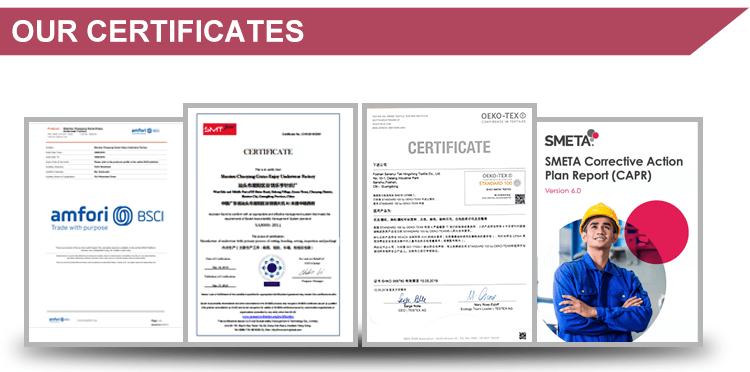
Estas certificaciones representan mucho más que solo papeleo. En mi experiencia trabajando con los fabricantes en los centros de ropa de China, he visto cómo estos estándares se traducen en prácticas del mundo real. SA8000, por ejemplo, proporciona un marco integral que aborda las horas de trabajo, la compensación justa y las condiciones del lugar de trabajo, todos los elementos críticos en una industria donde las prácticas laborales han sido históricamente problemáticas.
Recientemente visité un fabricante en Shantou que había invertido mucho en su proceso de certificación BSCI. La diferencia fue notable inmediatamente después de ingresar a su instalación: señalización de salida de emergencia clara, sistemas de ventilación adecuados, iluminación adecuada en las estaciones de trabajo y horarios de descanso estructurados para los trabajadores. Sus procesos de control de calidad se documentaron meticulosamente, con puntos de control de calidad en cada etapa de producción. Este nivel de organización y compromiso con los estándares traducidos directamente a la consistencia y satisfacción de los trabajadores de su producto. He observado que los fabricantes que mantienen estas certificaciones generalmente tienen tasas de defectos 30-40% más bajas que las fábricas no certificadas y las tasas de retención de trabajadores significativamente más altas, lo que mejora aún más la calidad del producto a través del personal experimentado.
¿Cómo evalúo las capacidades de producción y la especialización?
Cuando comencé a obtener desde China, cometí el costoso error de asumir que todos los fabricantes de ropa interior tenían capacidades similares. La realidad no podría ser más diferente.
Los fabricantes de ropa interior china a menudo se especializan en tipos específicos de ropa íntima. Evalúe sus capacidades centrales examinando su equipo, experiencia en manejo de materiales, técnicas de construcción y ejemplos de producción pasados. Solicite muestras de productos similares a los suyos para evaluar la calidad y la artesanía.
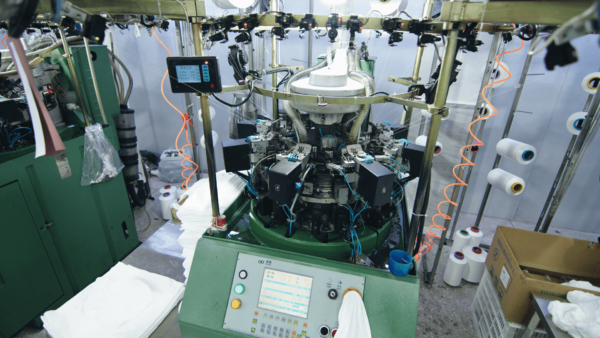
Aprendí a través de la experiencia que la especialización en la fabricación de ropa interior es mucho más profunda que solo las categorías de productos. Durante mis visitas de fábrica en la provincia de Guangdong, he observado que los fabricantes tienden a desarrollar grupos de experiencia en torno a técnicas de construcción específicas, materiales o tipos de productos. Por ejemplo, una fábrica que visité en Shenzhen se destacó específicamente en sujetadores de tazón moldeado con sus equipos especializados de formación de calor y procesos de enfriamiento calibrados con precisión, mientras luchaba con aplicaciones de encaje estirado. Otro en Dongguan había perfeccionado la tecnología perfecta de láser, pero carecía de la mano de obra calificada para las complejas construcciones de marco de alambre.
Al evaluar los socios potenciales, ahora presto especial atención a su inventario de máquinas y conjuntos de habilidades del operador. ¿Su línea de equipos coincide con los requisitos técnicos de mis diseños? ¿Han invertido en máquinas especializadas para métodos de construcción específicos como la unión, el tejido sin costuras o la costura de la aguja múltiple? También solicito información detallada sobre sus canales de abastecimiento de materiales: los fabricantes establecidos mantienen relaciones con proveedores confiables de telas y equipos, asegurando una calidad constante y un abastecimiento ético. Siempre reviso sus capacidades de muestreo también, ya que la capacidad de un fabricante para producir prototipos con precisión generalmente refleja su precisión de producción. La evaluación más reveladora proviene de examinar su producción actual: pido ver elementos que salen de sus líneas que requieren técnicas de construcción similares a mis productos planificados.
¿Qué debo buscar durante la evaluación de las instalaciones?
Me sorprendió las marcadas diferencias entre las presentaciones de fábrica y las realidades operativas. ¿Cómo puede cortar los recorridos por etapas para evaluar realmente una instalación?
Durante la evaluación de las instalaciones, examine las condiciones de trabajo, la calidad y el mantenimiento del equipo, la limpieza, la organización, la moral de los trabajadores y los estándares de seguridad. Mire más allá de la sala de exposición a las áreas de producción, las salas de descanso y las estaciones de control de calidad. Las visitas no anunciadas proporcionan la imagen más precisa de las operaciones.
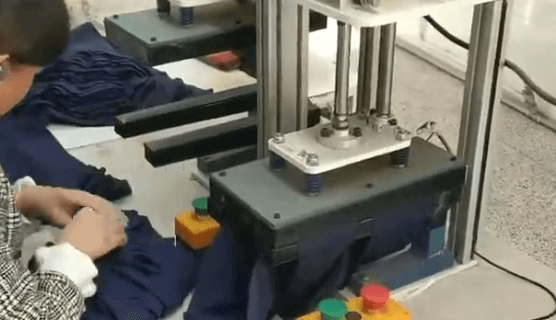
He realizado más de 50 evaluaciones de fábrica en China, y he desarrollado un enfoque metódico que va más allá de la visita guiada estándar. Siempre solicito ver todo el flujo de producción, desde el almacenamiento de materiales hasta la corte, la costura, el acabado, el control de calidad y el embalaje. Esta visión completa revela mucho sobre la sofisticación operativa de un fabricante y la atención al detalle. En una visita memorable a una fábrica cerca de Guangzhou, noté una organización inmaculada en sus áreas de exhibición, pero descubrí con respecto a la acumulación de polvo en los equipos en sus salas de producción secundaria, lo que sugiere prácticas de mantenimiento inconsistentes que podrían afectar la calidad del producto.
La interacción de los trabajadores es otro área de evaluación vital. Observo si los empleados parecen estresados, si tienen un espacio personal adecuado en las estaciones de trabajo y si están utilizando el equipo de seguridad adecuado. He aprendido a prestar atención a pequeños detalles como iluminación adecuada, asientos ergonómicos y calidad de ventilación, factores que afectan directamente el bienestar de los trabajadores y la calidad de producción. Cuando sea posible, las visitas de tiempo durante las pausas para el almuerzo para observar instalaciones y provisiones de comidas. Las áreas de descanso a menudo cuentan una historia más honesta sobre el tratamiento de los trabajadores que cualquier documento de certificación. También recomiendo verificar las instalaciones de alojamiento para fábricas que proporcionan viviendas, ya que las condiciones de vida afectan significativamente la satisfacción y la retención de los trabajadores. El control de la temperatura es particularmente importante para la producción de ropa interior, especialmente para elásticos y adhesivos, por lo que verifico que los sistemas climáticos mantengan condiciones consistentes en todas las áreas de producción.
¿Cómo puedo verificar los procesos de control de calidad?
Every manufacturer promises quality, but how can you distinguish between robust quality systems and empty assurances?
To verify quality control processes, examine their QC documentation, defect tracking systems, inspection methodologies, sampling procedures, and testing protocols. Look for in-line inspections at multiple production stages, established AQL standards, and clear procedures for addressing quality issues.
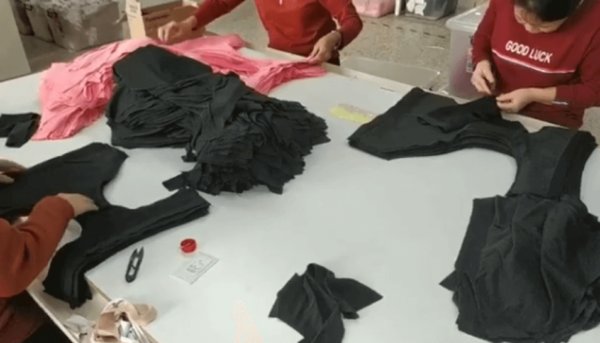
My experience has shown that quality control in underwear manufacturing requires specialized processes that go beyond standard garment production. Intimate apparel demands precision in sizing, consistent elasticity, and comfort-focused construction – areas where even small deviations can make products unwearable. I've developed a systematic approach to evaluating a manufacturer's quality control capabilities that has saved my clients countless hours and resources.
First, I examine their inspection points throughout production. Leading manufacturers implement at least five critical control points: material inspection before cutting, after cutting but before sewing, during sewing (in-line inspection), after completion of each piece, and final random sampling using AQL standards (Acceptable Quality Limit). I request documentation of their QC procedures and ask to see actual inspection records, which reveal both their methodology and transparency. I also evaluate their defect classification system – how they categorize and address minor, major, and critical defects speaks volumes about their quality priorities. Another crucial element is their material testing protocols for colorfastness, elasticity retention, and wash durability. One manufacturer I worked with in Shantou had invested in an on-site lab for preliminary testing, which dramatically reduced their fabric-related quality issues. Finally, I assess their feedback loop – how quality issues inform process improvements. The most reliable partners maintain detailed records of past quality challenges and the corrective actions implemented, demonstrating a commitment to continuous improvement rather than just meeting minimum standards.
¿Por qué es importante la experiencia y las referencias de la industria?
En mis primeros días de abastecimiento, subestimé la importancia de la historia del fabricante y las relaciones con los clientes. ¿Qué hace que estos factores indicadores cruciales de confiabilidad?
La experiencia y las referencias de la industria proporcionan información sobre la estabilidad de un fabricante, las habilidades de resolución de problemas y la satisfacción del cliente. Busque fabricantes con al menos 5-10 años en la producción de ropa interior, solicite referencias de clientes de categorías de productos similares y consulte sobre las relaciones de marca a largo plazo.
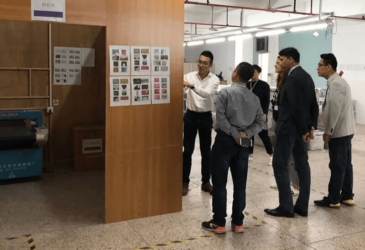
Through my years in the intimate apparel industry, I've observed that the most reliable manufacturers share a common trait: longevity coupled with continuous improvement. Underwear manufacturing presents unique challenges that only experience can effectively address. When I evaluate a manufacturer's industry background, I look beyond simple years in business to understand their evolution and specialization journey. A factory that has been producing women's intimate apparel for 15+ years has likely encountered and solved countless construction challenges, material performance issues, and fit inconsistencies that newer operations are still discovering.
Reference checking has become one of my most valuable assessment tools. I specifically request references from brands producing similar product types at comparable volume levels. The questions I ask these references go beyond general satisfaction to specific performance metrics: How consistent is sizing across production runs? How effectively does the manufacturer communicate production challenges? What is their on-time delivery rate? How do they handle quality issues when they arise? One particularly revealing question I always include: "How has the manufacturer improved their processes during your partnership?" The answers provide insights into their commitment to advancement rather than complacency. I've found that manufacturers who maintain partnerships with established brands for 5+ years typically demonstrate superior problem-solving capabilities and communication transparency. During a recent factory evaluation, I discovered that a manufacturer had maintained relationships with three major European brands for over seven years – this long-term success with demanding clients ultimately proved more valuable than their impressive equipment showcase.
¿Qué tan importante es la comunicación y la transparencia?
Poor communication has derailed more production partnerships than I can count. What communication standards should brands expect from reliable manufacturers?
Effective communication and transparency are foundational to successful manufacturing partnerships. Evaluate response times, English proficiency of key staff, clarity of documentation, willingness to acknowledge challenges, and communication systems for production updates and problem resolution.

A través de la gestión de la producción en múltiples fábricas chinas, he aprendido que la capacidad de comunicación es tan importante como la capacidad técnica para determinar el éxito de la asociación. El proceso de fabricación de ropa interior implica numerosas decisiones técnicas y ajustes que requieren intercambios claros y oportunos entre los representantes de la marca y el fabricante. Evalúo el potencial de comunicación desde la primera interacción, observando los tiempos de respuesta, la comprensión de los requisitos técnicos y la voluntad de hacer preguntas aclaratorias en lugar de hacer suposiciones.
El dominio del lenguaje sigue siendo una consideración significativa a pesar de los avances tecnológicos en la traducción. Busco fabricantes con gerentes de cuentas que demuestren fuertes habilidades en inglés, particularmente con respecto a la terminología técnica específica para la construcción íntima de ropa. La claridad de la documentación es igualmente importante: las citas detalladas, los plazos de producción integrales y los informes de calidad estructurados indican sistemas de comunicación interna organizados. También evalúo la transparencia con respecto a las capacidades y limitaciones. Los socios más confiables con los que he trabajado discuten abiertamente las áreas donde sobresalen y donde enfrentan desafíos, en lugar de ser excesivos. Durante la producción, los sistemas de comunicación se vuelven críticos. Prefiero a los fabricantes que proporcionan actualizaciones de producción regulares con la documentación visual de apoyo y han establecido protocolos para marcar los posibles problemas tempranos. Un fabricante con el que me asocio en Guangdong ha implementado un sistema de seguimiento de producción digital que permite a las marcas monitorear el progreso a través de fases de producción clave, completos con informes de inspección y documentación de resolución de problemas. Este nivel de transparencia de comunicación ha eliminado prácticamente los retrasos sorpresa y los problemas de calidad que comúnmente plagan los plazos de producción.
¿Qué debo saber sobre la capacidad de producción y los plazos de entrega?
Las expectativas poco realistas sobre la capacidad de producción y el tiempo han causado innumerables dolores de cabeza para las marcas. ¿Qué factores determinan la planificación realista de la producción?
Comprender la capacidad de producción y los plazos de entrega ayuda a establecer expectativas realistas. Verifique la capacidad de producción mensual, las cantidades mínimas de pedido (MOQ), las fluctuaciones de capacidad estacional, los sistemas de planificación de producción y los plazos de entrega estándar para el muestreo y la producción a granel. Factor en los plazos de abastecimiento de materiales y las posibles causas de retraso.
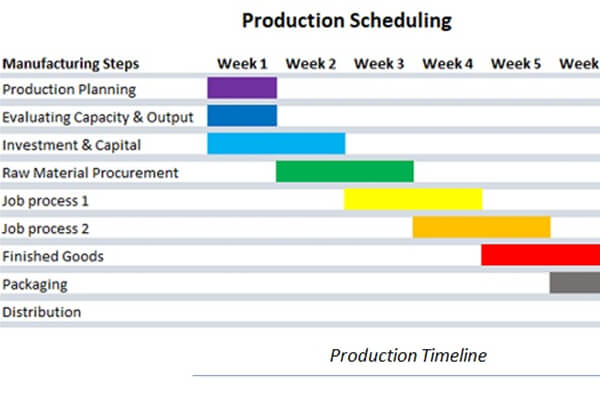
En mis años supervisando la planificación de la producción para marcas de ropa íntimas, he desarrollado un enfoque detallado para evaluar las reclamaciones de capacidad del fabricante. Muchas fábricas presentan su producción máxima teórica, pero esto rara vez refleja la realidad de producción sostenible y centrada en la calidad. Evalúo la capacidad a través de múltiples lentes: recuento y tipo de máquina, números de trabajadores y niveles de habilidad, organización de la línea de producción y registros de producción histórica. Para la fabricación de ropa interior específicamente, observo su capacidad para diferentes tipos de construcción: operaciones de corte y costo versus productos moldeados, por ejemplo, utilizan diferentes equipos y procesos con diferentes tasas de salida.
Las cantidades mínimas de pedido revelan mucho sobre el enfoque operativo de un fabricante. Los productores tradicionales a gran escala generalmente establecen MOQ en más de 1,000 piezas por estilo/color, mientras que las operaciones más flexibles pueden acomodar mínimos de 300-500 piezas a costos unitarios ligeramente más altos. Comprender estos parámetros es crucial para las marcas en diferentes etapas de crecimiento. La evaluación del tiempo de entrega requiere mirar más allá de los plazos de producción estándar a todo el proceso, incluido el abastecimiento de materiales (especialmente importante para telas y adornos especializados comunes en ropa interior), iteraciones de desarrollo de muestras, producción a granel, control de calidad y logística de envío. Siempre discuto las fluctuaciones de la capacidad estacional: muchos fabricantes chinos experimentan una capacidad reducida en torno al Año Nuevo chino y otras vacaciones importantes, mientras enfrentan posibles cuellos de botella durante las temporadas de producción máxima (generalmente de julio-octubre para el inventario minorista de vacaciones). Los socios más confiables mantienen sistemas de planificación de producción sofisticados que explican estas variables y proporcionan plazos realistas en lugar de estimaciones optimistas. Recientemente recorrí una instalación en Shantou que había implementado el seguimiento de la producción digital en todos los departamentos, dándoles datos precisos de utilización de la capacidad que permitieron compromisos de entrega precisos, un nivel de sofisticación que reduce significativamente las decepciones de la línea de tiempo.
Conclusión
Identificar a los fabricantes de ropa interior confiable y ética en China requiere una evaluación sistemática de certificaciones, capacidades de producción, condiciones de las instalaciones, procesos de control de calidad, experiencia, comunicación y capacidad. A través de una evaluación exhaustiva de estos factores, las marcas pueden establecer asociaciones de fabricación exitosas.
Obtenga una cotización gratuita para sus proyectos de ropa interior
